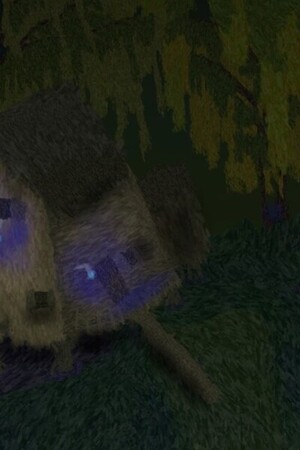Chapter 2:
The Velcian Deluge
Introducing the Divide: The BleakReedHollow
Before we dive fully into the warmwater heartache of this place, allow me a brief clarification:
The Velcain Deluge was not the first place I stepped foot into within the Divide.
It was not the first realm, or even the first plane.
By the time I reached the Deluge, I had already traversed frozen gardens, screamed through fields that rearranged my bones, and kissed something that might have once been a moon.
I was no longer new to the nonsense of this world. I had, as one might say, adjusted.
My rifle had not.
A fine Alphshad build, she was. Hand-oiled, stocked with my initials carved along the shoulder brace. I had taken her into the marshes outside New Duncaster, down to the cliffs of Blettermoor. I trusted that weapon more than I did most of my cousins.
And yet here, in the Divide?
It was useless.
As if the very idea of gunpowder had been declared “emotionally incompatible” with reality. I once fired at a creature with twenty-seven eyes—it laughed. The bullet fell like a raindrop on warm pudding.
Another time, I swear the beast caught it… and tossed it back.
Eventually, I left the rifle by a carved tree that sang lullabies. It wasn’t broken. Just… obsolete.
But I digress. And I mustn’t do so too often, or we’ll never make it past the lantern posts.
The point is: by the time I arrived at the Velcain Deluge, I knew better than to trust what I understood.
This realm—this wet cathedral of teeth and tenderness—was something else entirely.
And it means something to me, dear reader.
More than I care to share… yet.
Let us now enter it properly.
Lanterns lit. Head bowed. Ears open.
Without further ado—
The Velcain Deluge.
--Atmosphere and Terrain Conditions
Upon entry to the Velcain Deluge, the most immediate and consistent environmental trait is the temperature: warm, without exception. The warmth is not seasonal, nor does it follow any observable solar pattern.
Instead, it originates from a neighboring volcanic site—hereafter referred to as the Volcanic Spillage Spring.
This spring is less of a mountain eruption, more of an eternal leak of molten material. Lava flows gently and constantly from a breached basin, snaking through black stone channels shaped by hand.
Unusual caretakers maintain it: Pixies.
These are not your garden-pleasant, flutter-and-fiddle types. These pixies wear heatproof masks and gloves woven from something resembling bark and chitin. They work in silence. They do not acknowledge onlookers. I recommend avoiding interference.
This geothermal runoff is intentionally redirected through grooved roots and channel-systems, feeding warmth into the rivers and stillwaters of the Velcain Deluge.
As such, the swamp water throughout the Deluge is not stagnant—it is awkwardly hot.
It should be stated here that the word "awkward" is chosen precisely.
The temperature is not scalding or unsafe, but it is unnatural for a bog. There is an expectation of chill, or even rot. Instead, the water retains a sort of… bathtub comfort—which only becomes more peculiar with prolonged exposure.
-----Hydrology and Ground Conditions
The terrain is composed primarily of mud flats, sloping marsh shelves, and root-tangles that rise and fall with no predictable pattern.
Wooden plank paths—many ancient, many newly constructed—crisscross the region, appearing wherever foot traffic is most frequent. These paths are often layered with thick sod or bark-pulp to reduce sinking.
Effectiveness: limited.
By the first week, one’s clothing is typically damp or fully soaked from knee down.
By the second week, this is no longer a point of concern.
An unusual hydrophysical anomaly should be noted:
Despite the constant moisture, the water in the Velcain Deluge exhibits low permeability against mortal skin and woven fabrics.
Clothing, when submerged, becomes wet—but does not retain sogginess. Skin, even after extended exposure (8–10 hours tested), does not wrinkle or suffer standard waterlogging effects.
I refer to this locally as the "dry wetness" of Velcain water. It is notably ineffective for traditional washing or dye-removal, and it produces no visible mildew on untreated surfaces.
The water is thick—but not filthy. Warm—but not boiling. Present—but not clinging.
Further study into its magical molecular alignment is recommended, but well beyond the means of this guide.
-------Luminance Anomaly
One of the most consistent environmental irregularities across the Divide at large is the phenomenon now referred to as the Luminance Anomaly. In brief: functional sunlight is present in only a minority of observed regions.
Current estimates suggest that only 1 in 5 locations within the Divide possess a sun—or a sun-like source—that emits light in a predictable arc or cycle.
This has prompted early theorists (myself once included) to suggest that such places exist outside of the mortal sky, or perhaps function as “fracture zones” not bound by natural cosmology. However, this hypothesis has been officially disproven through the work of Dr. Corven Maddex, an explorer and astral surveyor, who documented that even in non-sunned zones, nightfall still occurs—with relative consistency.
Maddex’s measurements, conducted across nine distinct bioregions, show that light levels drop and ambient temperature shifts still track with a broader solar cycle, even where no visible celestial body is present. The prevailing conclusion is that the Divide is not outside time or space—it is simply unconcerned with visual evidence of them.
-----------Sky Conditions – Velcain Deluge
Within the Velcain Deluge, the sky is devoid of stars, moonlight, or any perceivable sun.
The Hollow’s atmosphere remains in perpetual twilight, but not of a natural kind.
Overhead, a dense fog canopy—coloration ranging from dark pine green to ash-black—prevents visibility beyond a few hundred feet upward.
This fog is present even during peak “daylight” hours.
Its movement is sluggish, almost deliberately slow, and may be partially magical in nature.
While the origin of this upper fog remains unknown, the leading theory is climatic density—the Hollow’s immense plant biomass and water saturation contribute to an over-rich air composition that suppresses light penetration.
Despite these conditions, the vegetation thrives.
--------Bioluminescence and Flora Behavior
Plant life in the Velcain Deluge does not rely on sunlight.
Bioluminescence is rampant and ubiquitous.
Many vines, ferns, and large-leaf flora emit light in shades of blue, green, or soft amber, with rootbulbs and underbark seams glowing at night. Some plants react to touch or sound with temporary flashes of light—this behavior is often seen near public gathering roots and footpaths.
Notably, trees exhibit abnormal growth rates and regulated behavior.
Species genetically similar to cypress mature in less than a year.
Despite this rapid development, there is no observed overgrowth or invasive spread.
Trees appear to grow until they reach a “settled state,” after which they remain in stable condition—neither spreading wildly nor diminishing, unless physically harvested.
-----Lumber Culture and Settlement
Due to the ethically neutral status of lumber in the Deluge, local inhabitants (see next entry) regularly harvest wood for shacks, platforms, bridges, and trade structures.
Unlike most Divide realms, where tree-harvesting is taboo, the Deluge encourages it—both culturally and ecologically. The wood regrows at a rate sufficient to sustain villages, and in many cases, entire floating hamlets are rebuilt annually with no net loss.
As a result, construction is cheap, fast, and widespread.
The only known issue arises with wood warping due to heat exposure. This is countered through the use of coated root-lacquer, a resin secreted by a tree species colloquially named "Swaywood" (see Appendix 3B for chemical analysis).
------The Lantern System – Origin Unknown
Of all structures within the Velcain Deluge, the lanterns remain the most unexplained—even by the standards of the Divide.
They are numerous. Placed with intent. And yet, no one claims to have built them.
Each lantern consists of a hanging crystal—smooth, multi-faceted, and rich blue in hue, somewhere between royal sapphire and ocean glass. These crystals glow continuously without flicker or fuel, and they are cold to the touch.
It is believed these are grown, not forged. Locals claim the crystals originate from a type of seed pod, found deep beneath the bog waters. These “blue-pods,” as I’ve come to call them, are rarely seen outside their submerged stage. I have made no attempts to retrieve one.
(And with all due respect, I would not recommend drowning oneself in search of a lantern seed. One does get attached to breathing.)
The support structures—where things become truly uncanny—are made of a material resembling steel, yet utterly foreign to all known metallurgies.
Even the industrial smelting found in Volcanios (the Lava Spring plane) produces only riveted iron and alloy pipes.
These poles, however, are seamless. Smooth. Cold. And in many cases, appear to have grown directly from tree bark or the walls of homes.
I dismantled part of a dwelling during my third month—with permission—and discovered one such post running from ceiling to subsoil, perfectly embedded in the frame. It did not shake when struck. It did not shift. It was as though the entire house had grown around it.
The tree to which the post was attached proved indestructible by all tools available to me. Axe, saw, fire—all rejected. The bark deflected energy like rippled glass.
---Local Understanding (or Lack Thereof)
When I questioned residents about the origin of these posts, I received unified indifference.
Shrugs. Head tilts. A few bemused chuckles.
The most direct answer I received was:
"Oh, those? Old Ones put 'em in."
Attempts to elaborate on who or what these “Old Ones” were proved fruitless. The phrase is spoken with casual reverence, like the way one might speak of gravity: inevitable, powerful, and not worth fighting.
The locals do not fear the posts. They do not worship them. They simply trust that they are meant to be there.
A cultural artifact of deep psychic programming, perhaps.
Or a real force that they feel, even if they do not name.
I have learned not to press further. In the Divide, too many questions produce... echoes.




Please sign in to leave a comment.